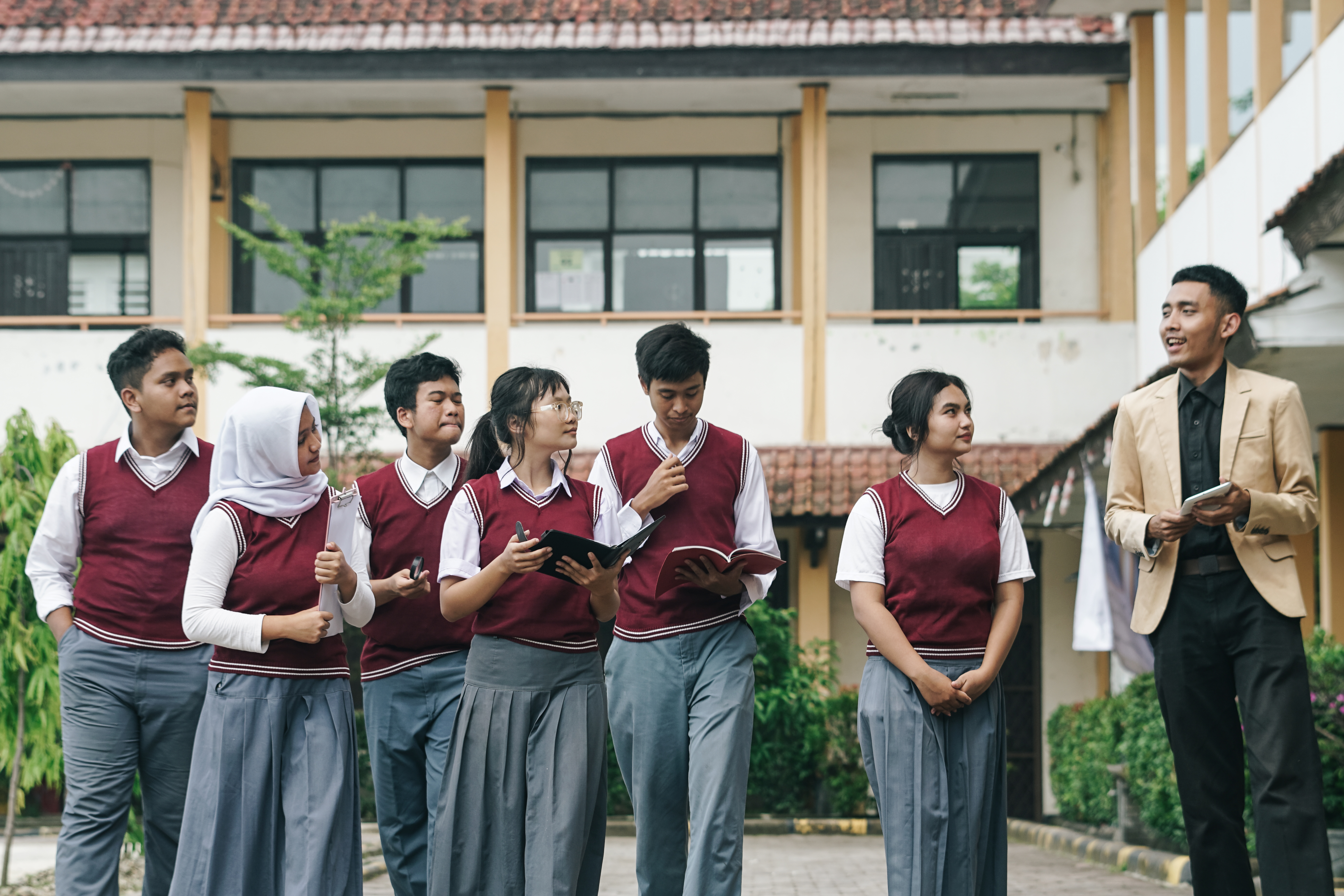“I hate this subject. I’ve never understood it—ever.”
How would you feel if a student said that to you on the very first day of class?
You might feel disheartened because your well-prepared lesson plans are rejected before they even begin. Or perhaps you would feel a tinge of sadness, knowing that behind such words lies a painful learning journey. Or perhaps, you would feel challenged—to turn this subject into something different.
At the start of the school year, we often come equipped with carefully crafted plans and strategies. Yet students walk in carrying something else entirely: a learning history we have not heard yet—one filled with past failures, self-doubt, or a loss of confidence.
This is where initial assessment comes in—not as a mere formality, but as a compass for teaching. It marks the first step toward building a learning experience that is intentional, meaningful, and joyful.
Start with the Student, Not the Subject
In a deep learning approach, students are not empty vessels waiting to be filled. Rather, they are individuals who bring prior knowledge, lived experiences, emotions, and personal contexts into the classroom. Without knowing who we are teaching, how can we possibly decide what or how to teach?
Ki Hadjar Dewantara once described education as a process of guiding a child’s natural growth—and guiding only works when we know both the direction and readiness of the learner. This idea connects closely with Vygotsky’s concept of the Zone of Proximal Development (ZPD), which reminds us that optimal learning happens when we know where a child is starting from and what they are ready to explore next. Similarly, Paulo Freire emphasized that real education is dialogical—built on interaction—and every meaningful dialogue begins with listening.
In this light, initial assessment becomes much more than a routine step. It is the teacher’s first act of truly listening to the learner.
What Is Initial Assessment?
Initial assessment is the process of identifying a student’s readiness to learn before instruction begins. It helps teachers understand the strengths, challenges, and needs of their students—both academically and socio-emotionally.
The Guidelines for Teaching and Assessment (2022) state:
“Diagnostic assessment is used to understand students’ overall readiness so that teachers can adjust strategies based on their actual needs.”
This means initial assessment is not just about academic content, but also about laying the groundwork for holistic, student-centered learning.
Meaningful Forms of Initial Assessment
An initial assessment does not have to be complex. What matters most is the intention behind it—to understand, not to judge. Here are several practical approaches across grade levels:
| Form of Assessment | Grade Level | Purpose |
| Expressive Drawing: “Draw yourself while learning” | Early Childhood – Primary | To understand students’ emotions and perceptions |
| Informal Talk / Interviews | Primary – Lower Secondary | To discover students’ learning experiences and interests |
| Low-Stakes Quiz | Primary – Upper Secondary | To map students’ prior knowledge and misconceptions |
| Mind Maps / Concept Maps | Lower – Upper Secondary | To explore how students connect ideas |
| Reflective Journals: “Your hopes for this subject” | Lower – Upper Secondary | To uncover students’ attitudes and learning goals |
| Learning Style & Interest Surveys | Lower – Upper Secondary | To help design personalized instruction |
🎨 1. Expressive Drawing
“Draw yourself while learning”
🧒Level: Early Childhood – Primary
🎯 Goal: To uncover students’ initial feelings, perceptions, and attitudes about learning
Steps:
- Provide a blank sheet or a template of a desk and chair
- Ask students to draw themselves while studying
- Prompt with questions:
- “What are you learning?”
- “How do you feel?”
- “Who’s with you?”
- Optionally, have students explain their drawing
📄 Worksheet: Simple drawing sheet + space to write 2–3 emotion words
🧩 Benefit: Opens informal conversation and builds early teacher-student connection
💬 2. Informal Talk / Interview
📚 Level: Primary – Lower Secondary
🎯 Goal: To understand students’ learning background, interests, and communication style
Steps:
- Prepare 3–5 short questions (on cards or paper), such as:
- “What subject do you enjoy most?”
- “Tell me about your best learning moment.”
- “What makes you bored in class?”
- Conduct one-on-one or peer interviews
- Teachers note key insights in their journal
📄 Worksheet: Interview sheet or question cards
🧩 Benefit: Builds trust and helps the teacher better understand each student
📊 3. Low-Stakes Quiz
📚 Level: Primary – Upper Secondary
🎯 Goal: To assess prior knowledge and identify misconceptions
Steps:
- Create 5–7 simple questions on the upcoming topic (e.g., digestion, short stories, independence)
- Use multiple choice, short answers, or true/false format
- Avoid grading—focus on identifying what students already know
📄 Worksheet: Paper or digital quiz (Google Forms works well)
🧩 Benefit: Enables targeted lesson planning based on students’ starting points
🧠 4. Mind Map / Concept Map
📚 Level: Lower – Upper Secondary
🎯 Goal: To reveal students’ thought structure and conceptual connections
Steps:
- Give a central topic (e.g., “Ecosystem”, “Narrative”, “Freedom”)
- Ask students to create a mind map based on what they already know
- Can be done individually or in groups
📄 Worksheet: Mind map template with a central idea
🧩 Benefit: Makes students’ thinking visible for further learning design
📓 5. Reflective Journal: “Your Hopes for This Subject”
📚 Level: Lower – Upper Secondary
🎯 Goal: To capture students’ hopes, fears, and motivation
Steps:
- Give prompts like:
- “In this subject, I hope to…”
- “I’m a little worried about…”
- “I wish I could learn how to…”
- Allow 5–10 minutes of free writing
- Teacher reviews and identifies common themes
📄 Worksheet: Reflection card with sentence starters
🧩 Benefit: Encourages student ownership of learning
📋 6. Learning Style & Interest Survey
📚 Level: Lower – Upper Secondary
🎯 Goal: To tailor teaching methods to students’ preferences
Steps:
- Provide a short survey (paper or Google Form)
- Example questions:
- “I learn best by… (reading / discussing / hands-on activities)”
- “Topics that excite me most are…”
- Analyze responses to guide teaching strategies
📄 Worksheet: Student-friendly survey
🧩 Benefit: Helps teachers adapt methods to student needs
What Comes After the Assessment?
Initial assessments are not an end in themselves. They are the gateway to student-centered learning. The information gathered should be meaningfully interpreted to:
- Adjust the Starting Point
Lessons should begin where the students are—not based on assumptions or a fixed curriculum pace. This reflects mindful teaching, rooted in student readiness and context. - Implement Differentiation
Every student receives what they need: enrichment, reinforcement, or emotional support. Learning becomes meaningful because the content and methods feel relevant. - Build Trust
When students feel seen and understood, they’re more willing to engage. This is the foundation of joyful learning—where emotional safety and warm relationships spark curiosity. - Co-Design Reflections with Students
Guru bisa melibatkan murid membaca dan memahami hasil asesmen awal, lalu berdialog soal tujuan bTeachers can share assessment results and open a dialogue about learning goals. This encourages metacognitive awareness and deeper motivation for students.
Asesmen Awal adalah Aksi Pedagogis
Initial Assessment is a Human-Centered Practice
Initial assessment is not about labelling or selecting—it’s a pedagogical act of care. At its heart, teaching is not about delivering content, but about truly knowing and guiding the learner.
Teaching is not about what we present—
it’s about how well we understand who we teach.
And that understanding begins with initial assessment.
Imagine if more classrooms started not with the syllabus, but with the sincere intention to truly know who is in the room.
Imagine if initial assessments weren’t seen as an obligation, but as an opportunity to pause, listen, and design learning that matters.
This is how deep learning begins—not just in classrooms, but in teacher meetings, learning communities, and the systems we choose to create together.
Writer: Yosua Nala Yudhistira, S.Pd., B.Ed
Melalui layanan workshop, pelatihan guru, dan pendampingan sekolah, Paideia Educational Solutions hadir sebagai mitra transformasi pendidikan di Indonesia.
Dan melalui LMS Guru Kreator, kami mendukung guru untuk terus belajar, berefleksi, dan merancang pembelajaran yang kontekstual dan berorientasi pada murid.
🔗 Pelajari lebih lanjut
paideia.id | gurukreator.id









